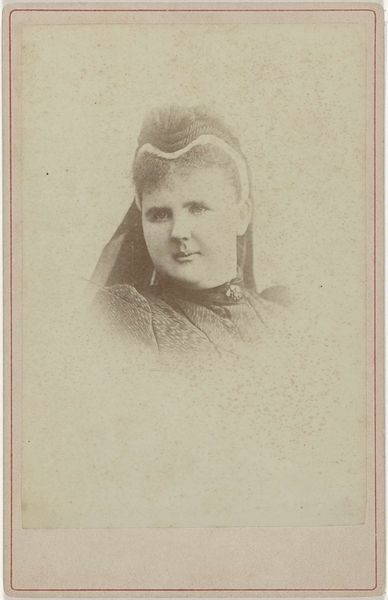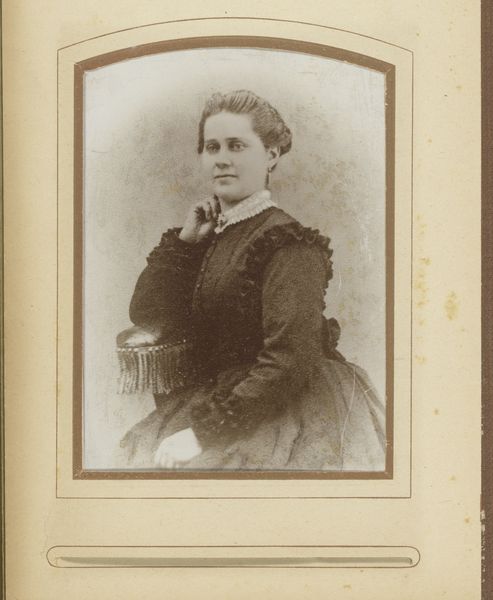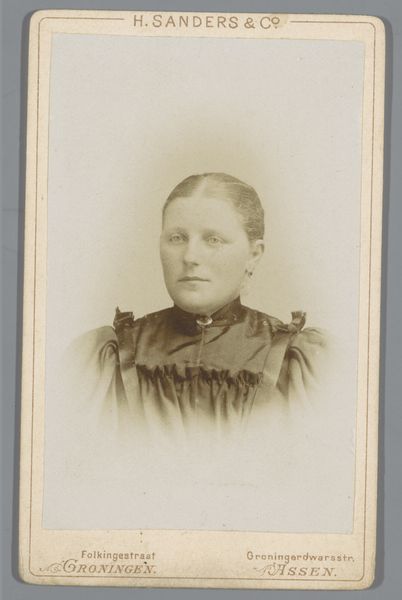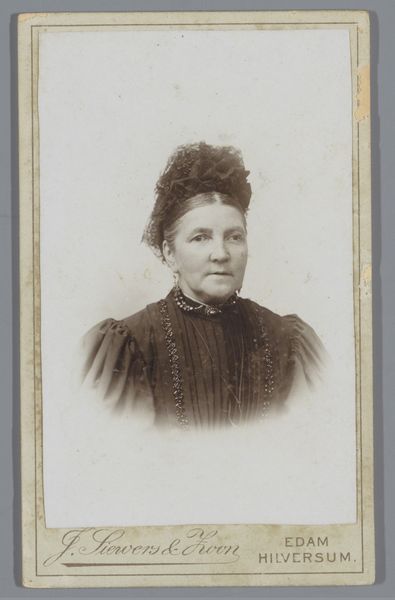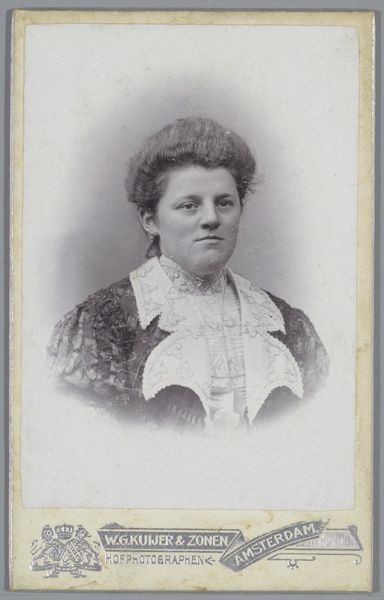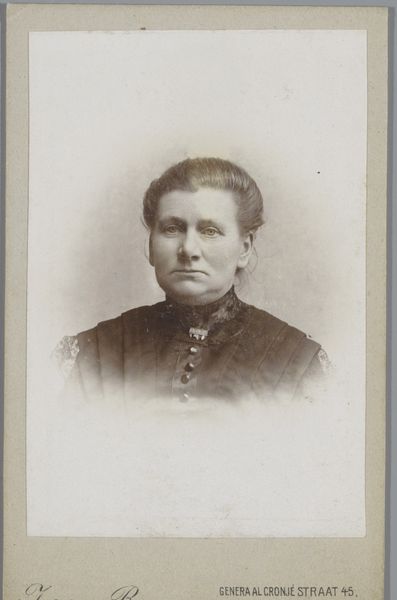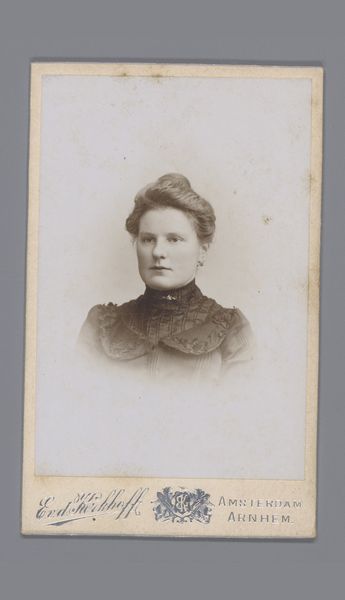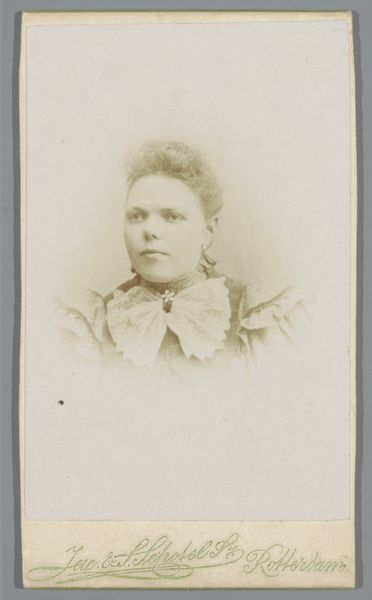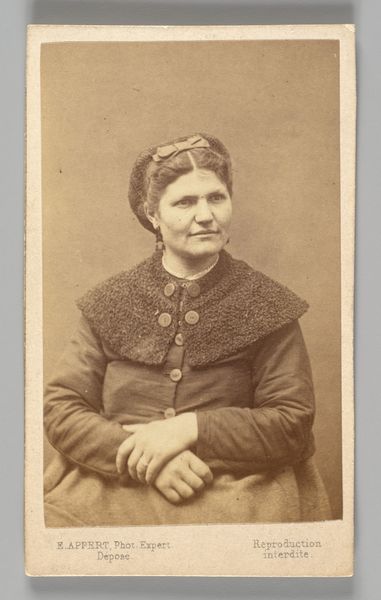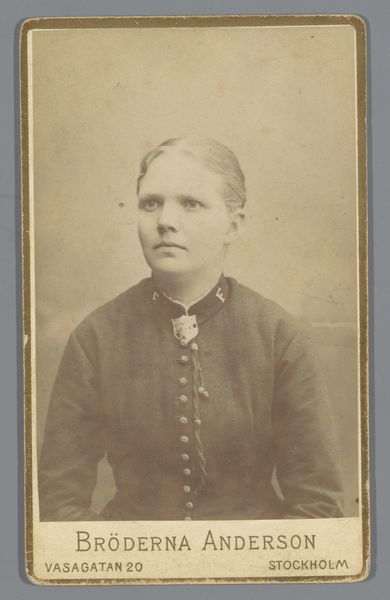
photography, gelatin-silver-print
#
portrait
#
photography
#
portrait reference
#
pencil drawing
#
gelatin-silver-print
#
portrait drawing
Dimensions: height 291 mm, width 196 mm, height 321 mm, width 196 mm
Copyright: Rijks Museum: Open Domain
Curator: Before us is a gelatin-silver print dating back to around 1891, a portrait of Queen Emma by Adolphe Zimmermans, currently residing here at the Rijksmuseum. Editor: It strikes me as both regal and intimate at the same time. The sepia tones soften her image, creating a delicate, almost dreamlike quality, don’t you think? Curator: Yes, the toning certainly lends a nostalgic air. Photographic portraiture, especially of royalty, served a distinct function. These images helped shape public perception, reinforce social hierarchies and national identity through visibility. Editor: Absolutely. And notice the setting; while the backdrop is plain, it's hard not to consider her dress, her jewelry, and especially her elaborate coiffure as integral to her royal representation. The subtle detailing speaks volumes about status and its constructed visual language. Curator: It’s important to remember photography’s role in democratizing portraiture. While painting remained exclusive, photography made images of prominent figures accessible to a wider audience. Though even with its spread, studio portraiture involved a performative aspect—the sitter carefully posed and styled. Editor: Precisely. There’s power in how Queen Emma presents herself; in the slightly upward gaze, in the deliberate styling—it hints at both strength and a carefully constructed public persona. It provokes considering questions about visibility, control, and the constraints imposed on women, and particularly royal women, during this time. Curator: Considering Zimmermans’s role, it is equally vital to remember studio photographers, like him, were skillful business operators, establishing networks, developing a particular aesthetic, marketing strategies to reach a wide audience. Editor: It adds a layer of intrigue, certainly. I feel the act of looking back is, in itself, an opportunity for us to reflect critically on our own era of digital portraiture and its inherent biases. Curator: It most certainly is. Images as historical documents provoke essential questions about our role as viewers. Editor: Yes, indeed. It makes you wonder what stories the queen would tell today.
Comments
No comments
Be the first to comment and join the conversation on the ultimate creative platform.
